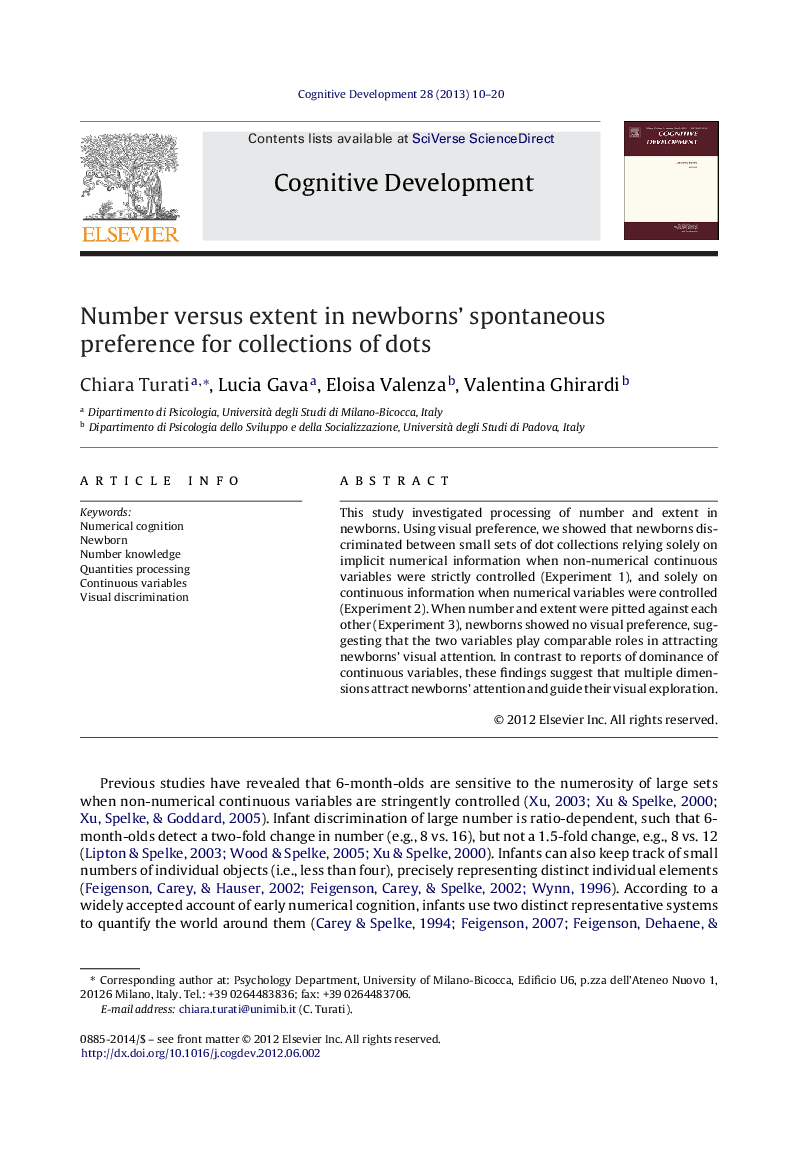| Article ID | Journal | Published Year | Pages | File Type |
|---|---|---|---|---|
| 916545 | Cognitive Development | 2013 | 11 Pages |
This study investigated processing of number and extent in newborns. Using visual preference, we showed that newborns discriminated between small sets of dot collections relying solely on implicit numerical information when non-numerical continuous variables were strictly controlled (Experiment 1), and solely on continuous information when numerical variables were controlled (Experiment 2). When number and extent were pitted against each other (Experiment 3), newborns showed no visual preference, suggesting that the two variables play comparable roles in attracting newborns’ visual attention. In contrast to reports of dominance of continuous variables, these findings suggest that multiple dimensions attract newborns’ attention and guide their visual exploration.
► The study investigated processing of number and extent in few-day-old infants. ► Small numbers were discriminated when continuous variables were controlled. ► Continuous information was discriminated when numerical variables were controlled. ► Multiple dimensions attract newborns’ attention and guide visual exploration.
